
At Scrowp, we have carried out numerous SEO audits over the years. These audits have been state-of-the-art, extensive and extensive. However, SEO only becomes exciting and truly impactful when the audit and strategy are actually implemented.
In general, an audit and a strategy lead to concrete recommendations. These recommendations must then be implemented, and it is this part of the mission that has always been more difficult.
While you may have mastered the skill of creating an SEO strategy and conducting an audit, the real key to success lies in the next step: implementation advice.
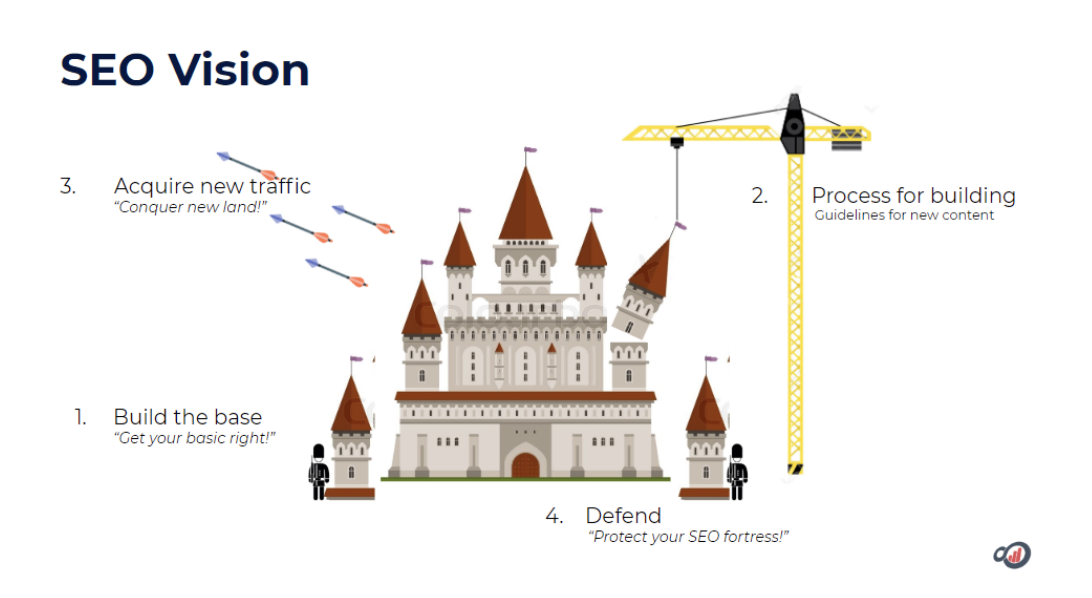
In this article, we show you a successful SEO case study.
As we have already mentioned, the key to success has been our involvement at every stage of the process. This involved being in tune with SEO marketers, content creators, web developers and others.
We were in charge of the SEO audit, the strategy AND the implementation. This case study proves the undeniable added value of managing all domains in terms of SEO.
Results
Over a period of 6 months, we doubled the volume of organic traffic to our client’s site:

We managed to get most of the customer targeted keywords to the top of results in the Google search engine.
During this period, the request went from position 12.2 to 1.8, as can be seen in the example below.
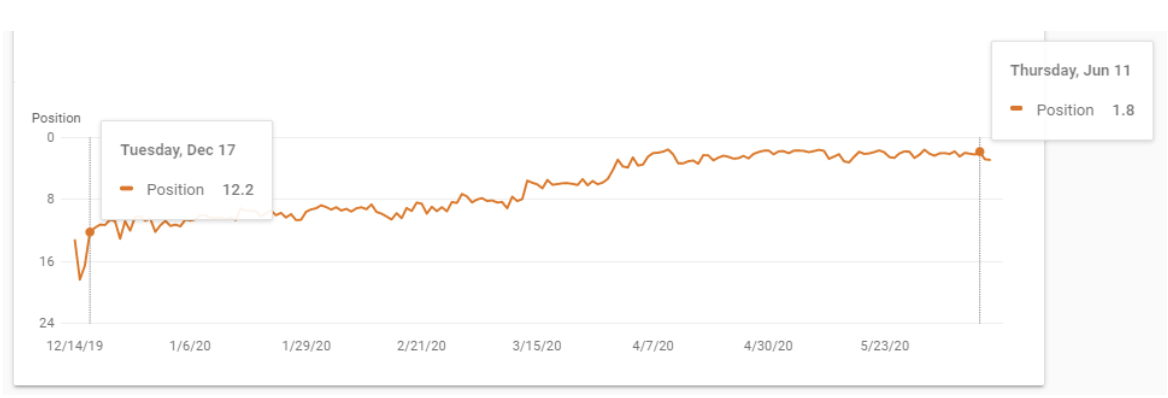
We now appear in the top 5 for most queries, ranked by volume of clicks (non-brand).
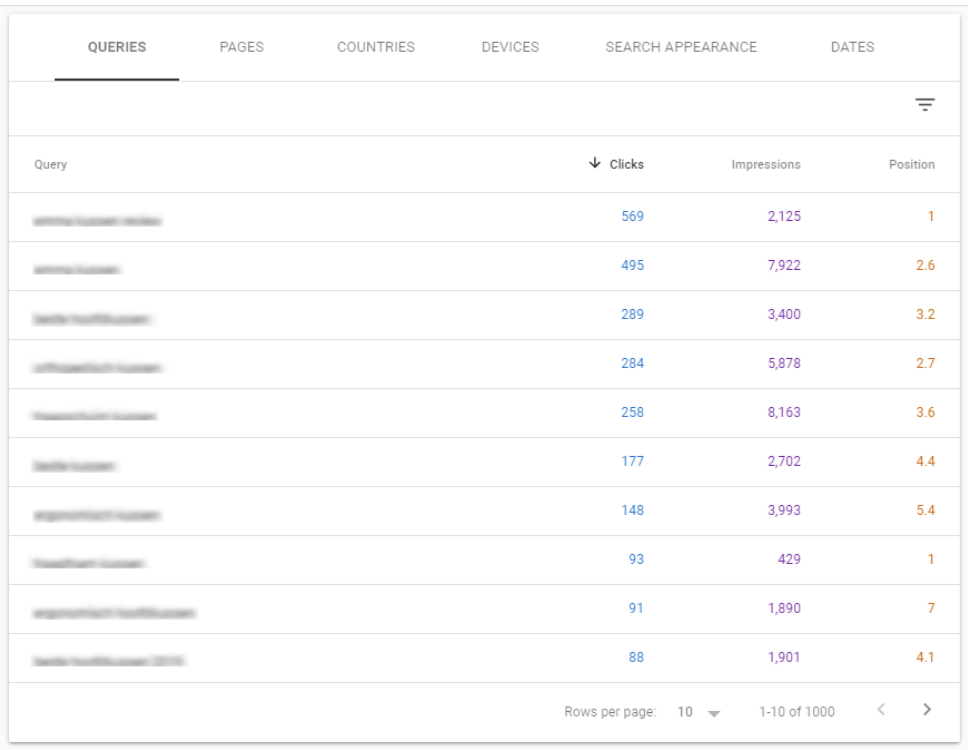
Also, we now appear in the top 10 for most queries, ranked by impression volume (non-brand).
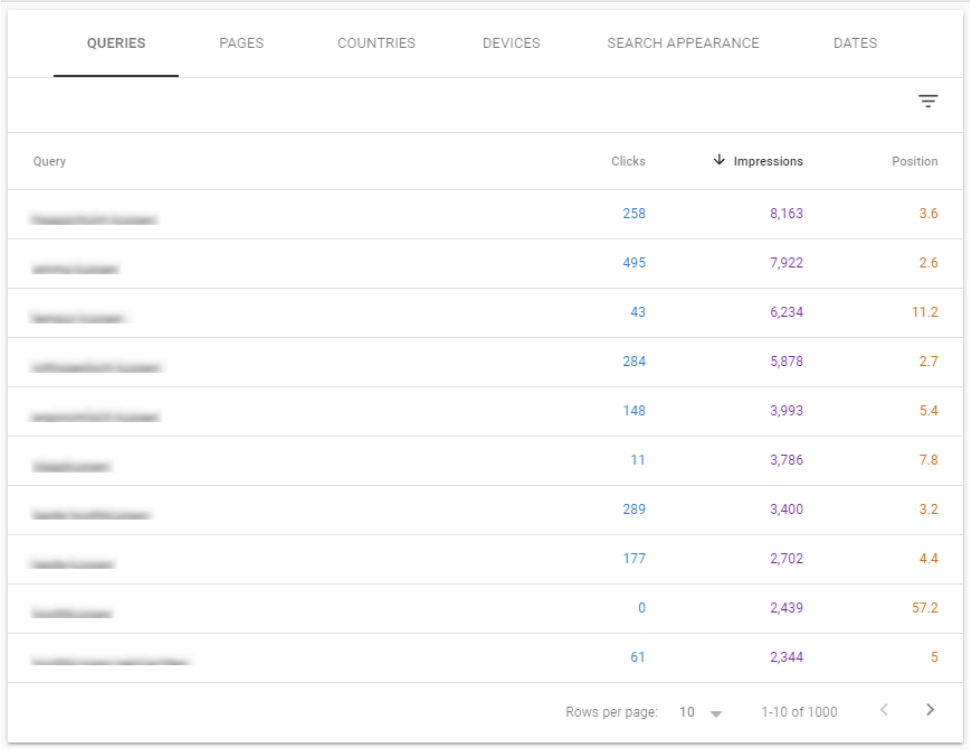
Methodology
We shared the results. Now is the time to share the methodology.
As mentioned above, the difference is in the implementation advice. We will therefore focus on this point while reviewing the methodology. How is this methodology different from others?
Methodology
- SEO audit – you guessed it already
- The strategy
- Keyword research
- Context creation
- Become known
- Vessel monitoring and piloting
SEO Audit
We won’t go into details for this part. We have mastered SEO audits for years. SEO audits encompass everything from implementing basic best practices on the site page, to advanced technical SEO recommendations.
The strategy
This part is important. Not all companies use the same angle to approach their SEO strategy.
In our case, we opted for a blog format but with a transparent sales intent.
So this is not your typical blog where you discuss opening a new store, hiring a new employee, or the last team building you did. This is also not a newsletter type blog.
This is an educational blog, with a clear sales intent. We REACH relevant users by focusing on high volume searches (REACH).
We then encourage CONSIDERATION by creating relevant and engaging content (CONSIDERATION). And finally, we CONVERT by presenting and positioning our offer (CONVERSION).
For example
- “We know you are looking for X (a very popular product), but have you ever considered Y (your product)?”
- “How to choose the best…”
The objective is to give truthful information, may direct the reader to your offer.
Keyword research
Keyword research is probably one of the most important steps.
We define our target searches according to different factors:
- The search volume
- The commercial impact
- Competition
We may want to rank for everything, but we have to ask ourselves the question: for what research could our website be a no-brainer? For what research can we really add value? In any case, you must remain ambitious.
We chose to limit ourselves to the first 10 searches. These are the 10 searches with the highest results in our formula “search volume x business impact x competition”. Knowing that the “implementation” part is the most difficult, we advise you to focus on this point.
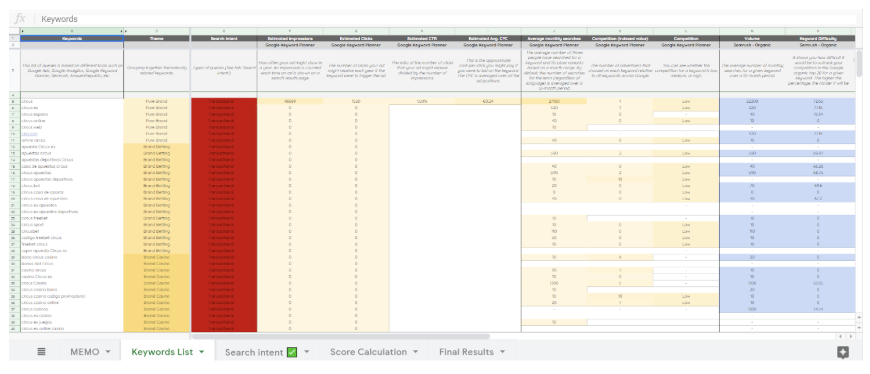
To identify our 10 target keywords (based on top 10 searches), we used data from Google Search Ads, Google Search Console, and Google Keyword Planner.
Context creation
For content creation, we went beyond what we usually do. Scrowp is not a content creation agency. Nevertheless, thanks to our experience, we know what needs to be done to create successful SEO content.
The tricky part of creating content is that you need great, passionate and knowledgeable content writers. This is a challenge, since content creation is often outsourced to freelancers who have no affinity with your business and its offerings.
On the other hand, you can have in-house content writers, but they are often “artists”, with a passion for writing. They don’t like being “forced” to write about things that might be useful for SEO. They are creative, free, and write out of passion.
In this case, we looked for people internally at the customer directly. It was a great success. Not only are these people the most knowledgeable about their business, but they also often know what is important to the website visitor. However, these people know their stuff, but do they know how to write properly?
For this, they benefited from the help of an internal content writer but in a support role, present to assist them when needed.
So what did we do?
The content was created around the targeted keywords. We provided content writers with a set of questions and topics on which to write the equivalent of a web page.
1 target keyword = 1 web page
Similar target keywords have been grouped together on the same web page.
Here is an example:
Our target keyword was “trampoline”.
We asked the content writer to make sure to cover the following points:
- What is a trampoline,
- What are the different types of trampolines,
- How to choose a trampoline,
- What to consider before buying a trampoline,
- What are the best trampolines,
- …
We have defined the scope of this article through our research. As an SEO specialist, you often hear that CONTENT IS KING. This is totally true.
Consider that each time a user does a search on Google, a competition begins.
Google wants to show the best content related to the user’s search.
If you don’t rank well naturally, Google thinks your content isn’t doing the trick, isn’t relevant, OR it hasn’t yet discovered what value your content might be. In any case, your content must be better than that of your competitors.
We guided our client through this content creation phase. Early results were amazing, but even today we continue to make suggestions to optimize content for these top searches.
Become known
We focused on two things in this phase: link building and on-page SEO.
Link building: While we typically provide the client with best practices on how to approach link building, we took it a step further in this case study. We actively participated in identifying relevant external linking opportunities.
Being actively involved in link building takes time but brings undeniable added value. This can indeed speed up your SEO performance considerably, especially in the beginning.
In addition to competitor link analysis, we also identified new link opportunities. All the links we put up were for domains with domain authority (+40 DA) and their domain topic was relevant to the web page we were linking to. All other link building best practices have also been considered.
On-page SEO
As an extension of content creation, we reviewed web pages before they were published. We have analyzed and provided the best practices for a page to be “SEO-friendly”.
Vessel monitoring and piloting
We check the results several times a week. The most important metrics for tracking progress change over time. CTR is very important, especially in the beginning. We experimented with different types of headlines and descriptions to trigger the best CTR. In our case, including numbers and symbols worked well for example. The goal is to highlight your search results so they can be clicked on. It is only when a user clicks through and begins to interact with the page that Google can properly assess the quality of your page.
Subsequently, other parameters, such as the “bounce rate”, the time spent in place and the “dwell time”, become increasingly important. Pages with a higher than average bounce rate were re-evaluated and reworked.
The presence time on the site and the “dwell time” are also important parameters to take into account. Dwell time refers to the time a user spends on your website before returning to the search results page to find another (better) solution/answer to their search. Of course, if a user only spends a few seconds on your website before searching for another result, this tells Google that your page is not responding to that specific search.
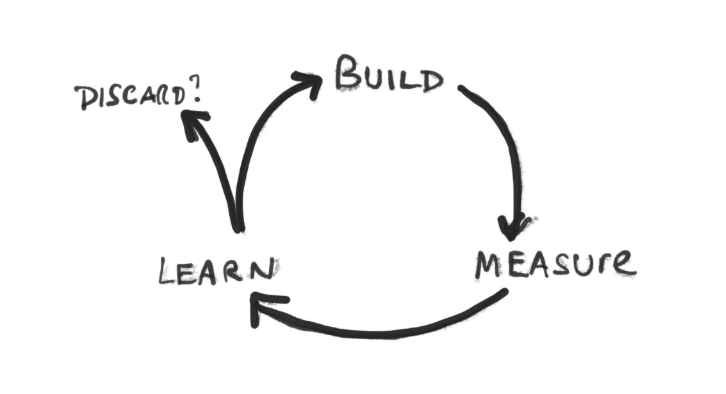
The speed at which we were able to make changes to these pages was amazing. This is an important part of ensuring successful SEO. SEO constantly experiments and monitors the metrics discussed above, and adapts based on the results. You need to be able to modify the pages quickly in case of a problem.
In summary
What do we need for successful SEO?
- A clear SEO strategy
- Selective keyword research
- Passionate and experienced content writers
- Easy access to editing web pages
- An SEO agency to guide you from strategy to implementation
The most difficult part of SEO is undoubtedly the implementation. Scrowp has proven that implementation and enforcement is the key to successful SEO success.
Yes, SEO efforts take a long time to bear fruit.
However, we are planting today the seeds that we will harvest in the future.






One thought on “How we doubled the organic traffic for this client”